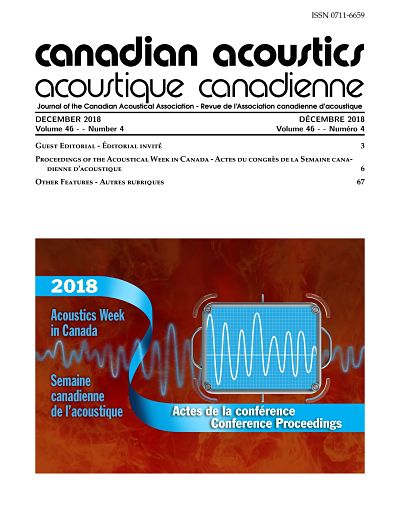Coarticulation in Speech Production
Abstract
Facial expressions and speech movements can impose conflicting demands on articulators. For example, the lip spreading movement associated with smiling is incompatible with bilabial closures for /m/, /b/ or /p/. Anecdotal evidence suggests this conflict may resolve as labiodental stop variants (see http://phonetic-blog.blogspot.ca/2012/03/u.html), though this discussion has been controversial [Ladefoged & Maddieson 1996, p. 18]. The simplest model of coarticulation – one of unmediated superposition of muscle activations [Gick et al., 2013, POMA 060207] – predicts that the outcome of this conflict should be determined by summing opposing forces due to competing muscle activations. If so, varying degrees of smile and varying degrees of closure force (e.g., for different stop consonants) should be expected to produce distinct outputs. Previous work suggests that closures for /m/, /b/ and /p/ vary (increasingly) in both intraoral pressure [Lubker & Parris 1970, JASA 47: 625] and muscle force [Gick et al. 2012, JASA 131: 3345]. An experiment will be presented in which bilabial stops are produced under varying smile conditions. Preliminary results indicate that labiodental stop variants occur more frequently for lower-force stops under higher-force smile conditions, as predicted. Implications for models of coarticulation will be discussed. [Funding from NSERC].
Additional Files
Published
How to Cite
Issue
Section
License
Author Licensing Addendum
This Licensing Addendum ("Addendum") is entered into between the undersigned Author(s) and Canadian Acoustics journal published by the Canadian Acoustical Association (hereinafter referred to as the "Publisher"). The Author(s) and the Publisher agree as follows:
-
Retained Rights: The Author(s) retain(s) the following rights:
- The right to reproduce, distribute, and publicly display the Work on the Author's personal website or the website of the Author's institution.
- The right to use the Work in the Author's teaching activities and presentations.
- The right to include the Work in a compilation for the Author's personal use, not for sale.
-
Grant of License: The Author(s) grant(s) to the Publisher a worldwide exclusive license to publish, reproduce, distribute, and display the Work in Canadian Acoustics and any other formats and media deemed appropriate by the Publisher.
-
Attribution: The Publisher agrees to include proper attribution to the Author(s) in all publications and reproductions of the Work.
-
No Conflict: This Addendum is intended to be in harmony with, and not in conflict with, the terms and conditions of the original agreement entered into between the Author(s) and the Publisher.
-
Copyright Clause: Copyright on articles is held by the Author(s). The corresponding Author has the right to grant on behalf of all Authors and does grant on behalf of all Authors, a worldwide exclusive license to the Publisher and its licensees in perpetuity, in all forms, formats, and media (whether known now or created in the future), including but not limited to the rights to publish, reproduce, distribute, display, store, translate, create adaptations, reprints, include within collections, and create summaries, extracts, and/or abstracts of the Contribution.


